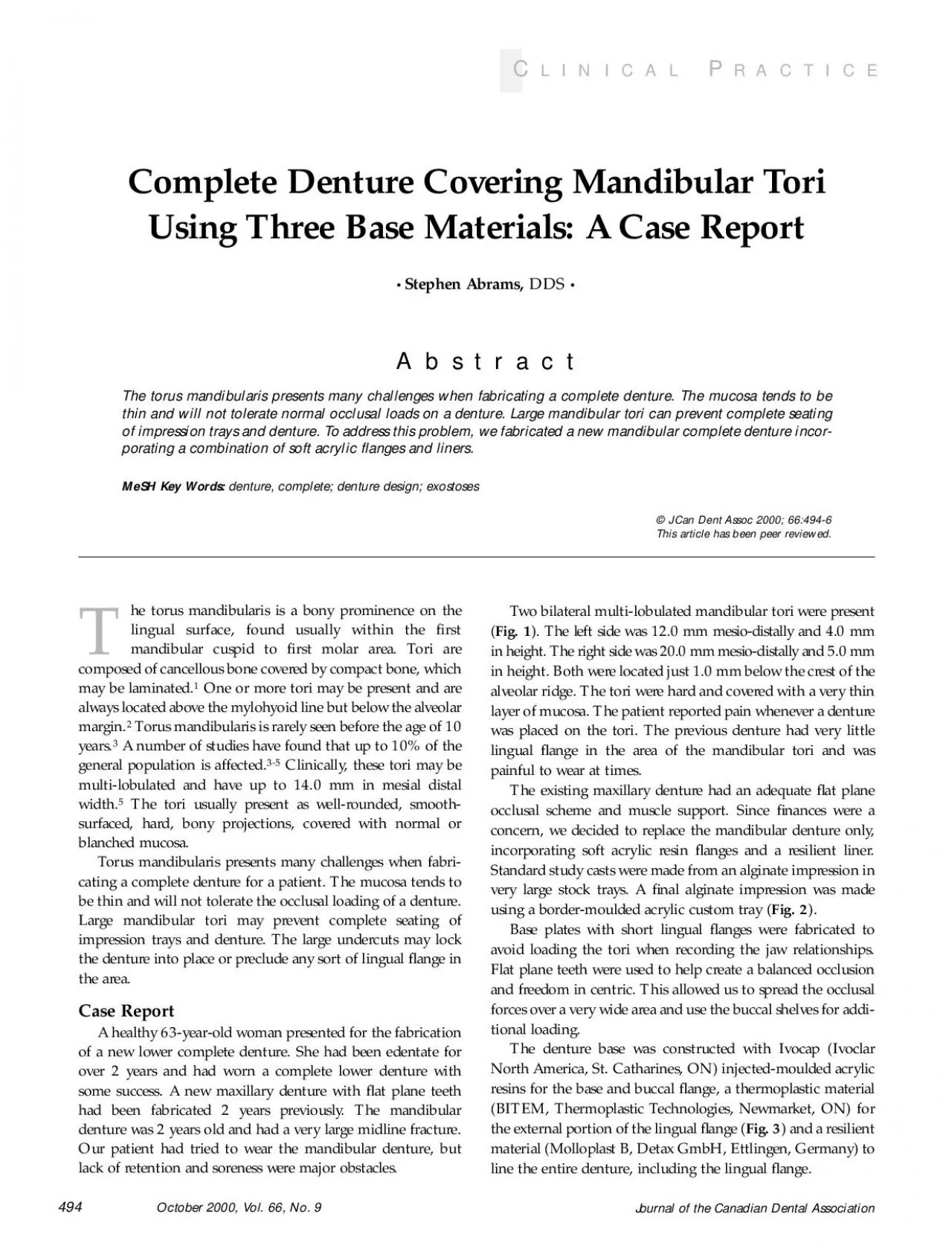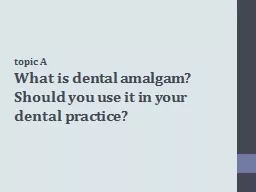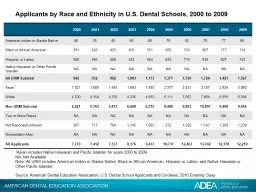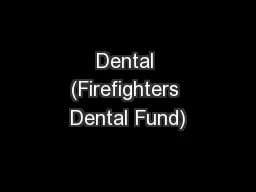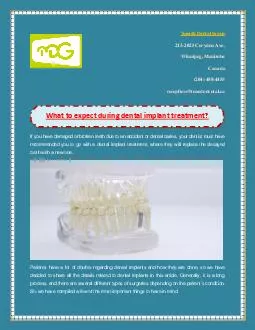PDF-Journal of the Canadian Dental AssociationOctober 2000 Vol 66 No 9he t
Author : anya | Published Date : 2021-08-16
This article has been peer reviewed October 2000 Vol 66 No 9Journal of the Canadian Dental AssociationComplete Denture Covering Mandibular Tori Using Three Base
Presentation Embed Code
Download Presentation
Download Presentation The PPT/PDF document "Journal of the Canadian Dental Associati..." is the property of its rightful owner. Permission is granted to download and print the materials on this website for personal, non-commercial use only, and to display it on your personal computer provided you do not modify the materials and that you retain all copyright notices contained in the materials. By downloading content from our website, you accept the terms of this agreement.
Journal of the Canadian Dental AssociationOctober 2000 Vol 66 No 9he t: Transcript
Download Rules Of Document
"Journal of the Canadian Dental AssociationOctober 2000 Vol 66 No 9he t"The content belongs to its owner. You may download and print it for personal use, without modification, and keep all copyright notices. By downloading, you agree to these terms.
Related Documents

